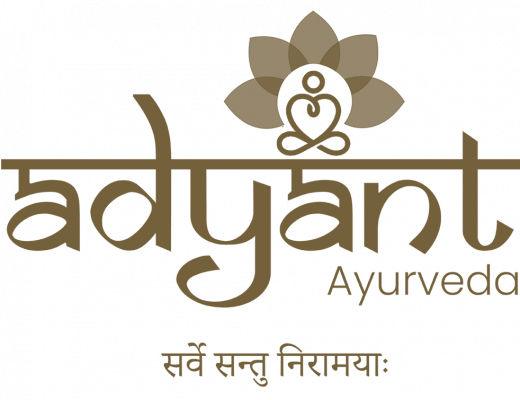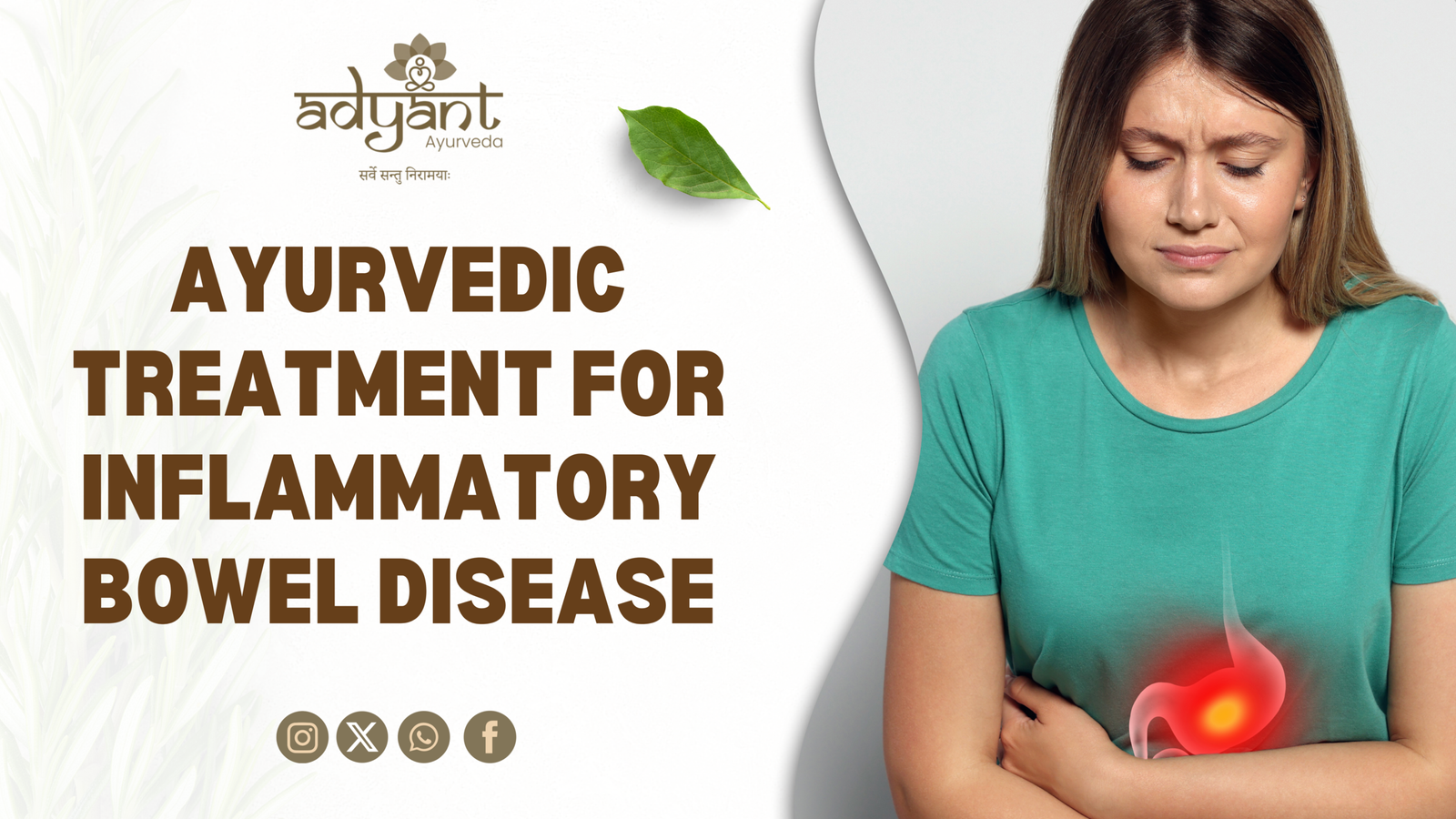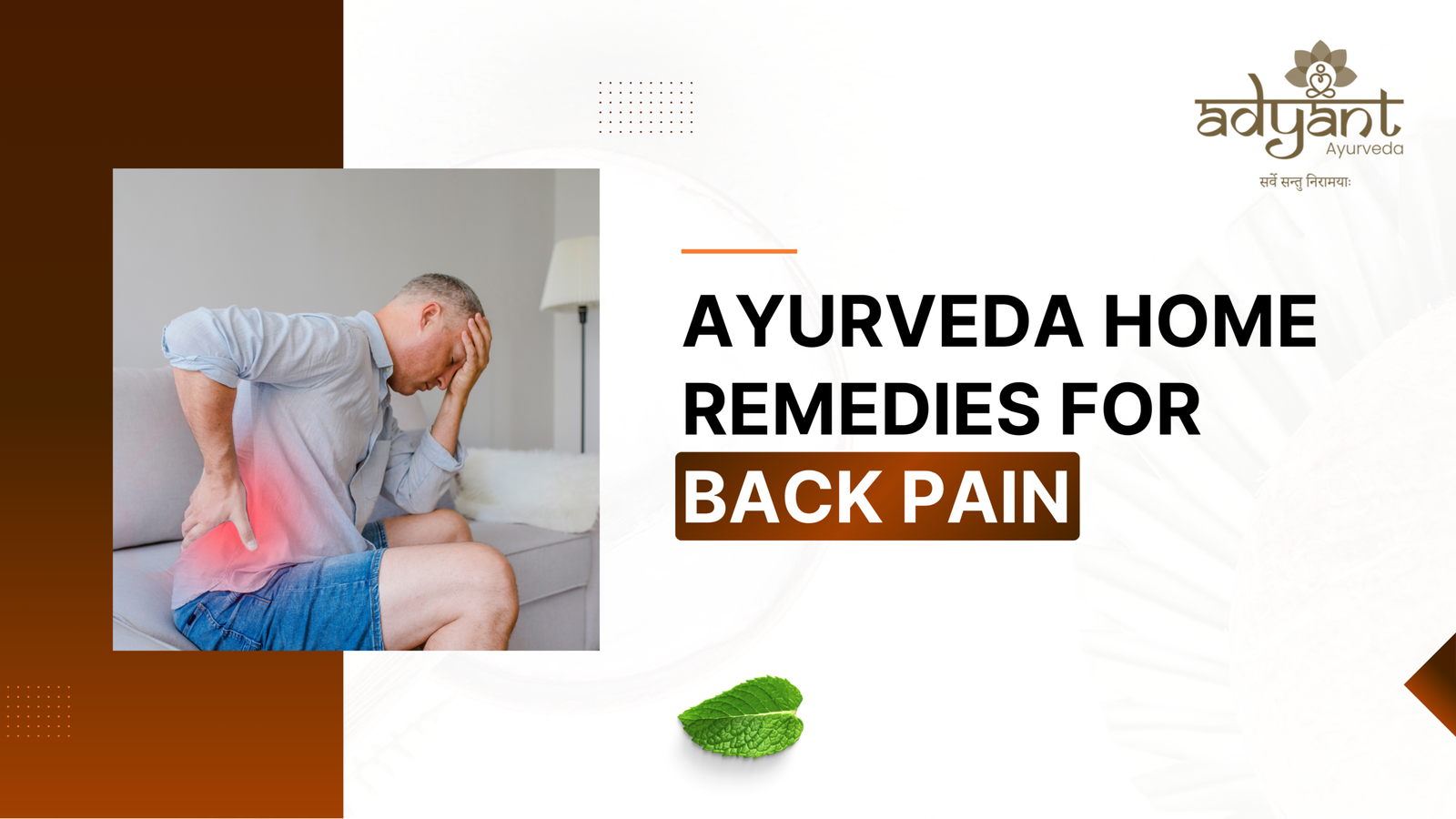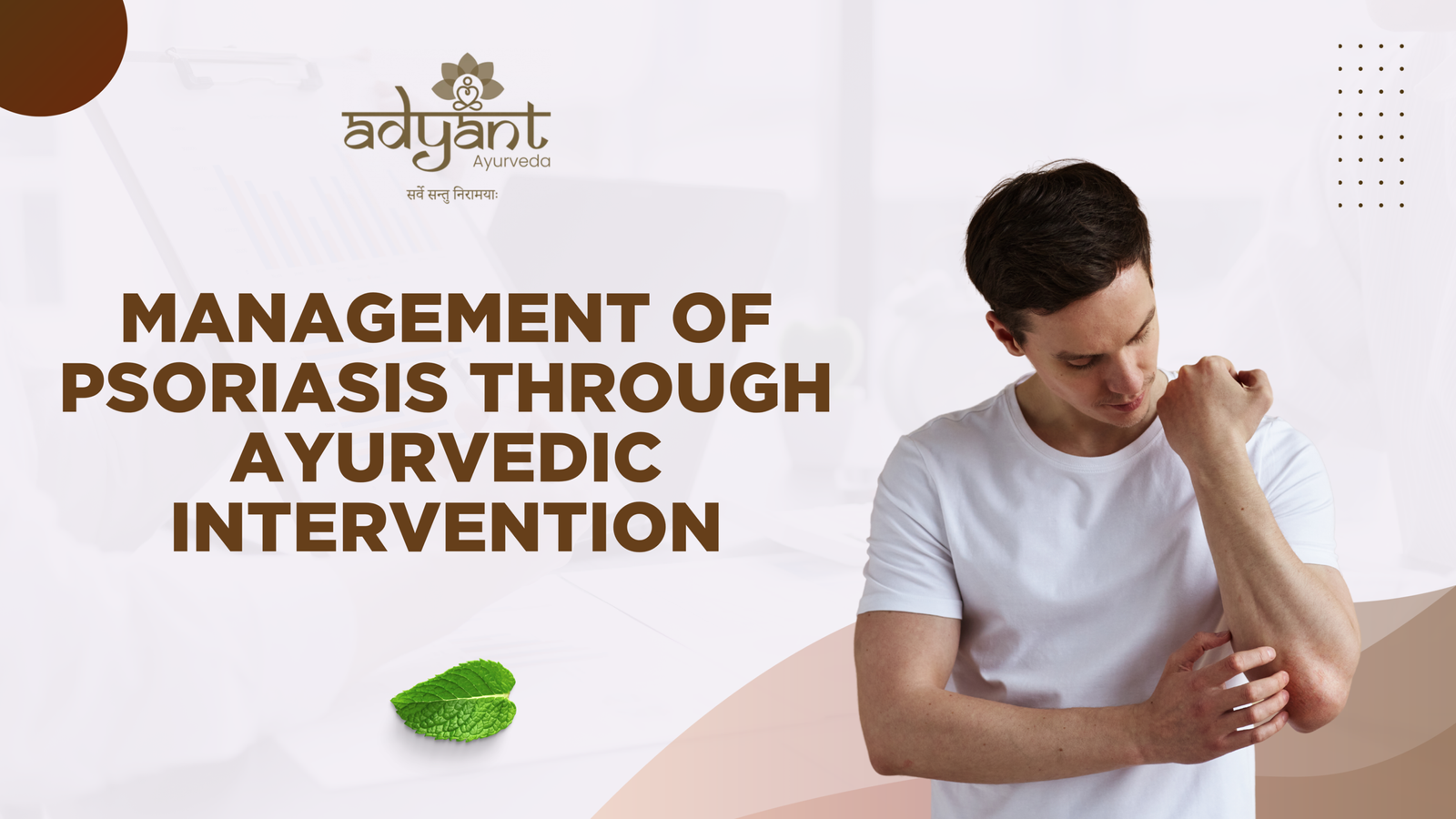Table of Contents
ToggleAyurvedic Treatment for Inflammatory Bowel Disease (IBD): Inflammatory Bowel Disease (IBD) is a chronic condition that affects the gastrointestinal tract. The two main types are:
- Ulcerative Colitis (UC): Inflammation and ulcers along the lining of the colon and rectum.
- Crohn’s Disease: Can affect any part of the digestive tract, often involving the deeper layers of the intestines.
Conventional treatments focus on symptom management using steroids and immunosuppressants, often without long-term relief. Ayurveda, however, addresses the root cause, emphasizing digestion, immunity, and lifestyle.
Medically reviewed by Dr. Shree Lakshmi, BAMS — Ayurvedic Panchakarma Specialist at Adyant Ayurveda, Bangalore
24+ years of Panchakarma treatments
Definition of Agni, Ama, and Srotas
- Agni is the digestive fire responsible for digestion, absorption, assimilation, and metabolism.
- Ama is the toxic waste produced due to impaired Agni, leading to disease.
- Srotas are the bodily channels through which nutrition, waste, and signals flow. Blockage of these channels due to Ama leads to symptoms like diarrhea, bloating, and fatigue in IBD.
Ayurvedic Perspective: IBD as Grahani, Pravahika, and Raktatisara
“Grahani hi nama agni sthanam… tasya vikrute grahani roga:” — Charaka Samhita, Chikitsa Sthana 15/44
“Agnisamyam aharasampatah” — Charaka Samhita, Chikitsa Sthana 15/211
What is Grahani?
Grahani is the seat of Agni (digestive fire), located above the navel. It retains and digests food until properly processed. When Agni is weakened, it leads to the release of undigested food, resulting in the production of Ama (toxins).
Types of Grahani (Dosha-wise)
- Vataja Grahani: Dryness, constipation, bloating
- Pittaja Grahani: Burning sensation, frequent stools, sour belching
- Kaphaja Grahani: Sticky stools, heaviness, lethargy
- Sannipataja Grahani: Mixed symptoms, chronic
Related Conditions
- Pravahika: Frequent, watery stools with tenesmus (linked to UC)
- Raktatisara: Diarrhea with blood and burning (active phase of UC)
“Sangrahinyah pravritte tu…” — Madhava Nidana, Raktatisara Adhyaya
Symptoms Comparison Table (UC vs Crohn’s vs Grahani)
| Condition | Key Symptoms | Ayurvedic Correlation |
|---|---|---|
| Ulcerative Colitis | Bloody stools, urgency, rectal pain | Raktatisara |
| Crohn’s Disease | Cramps, diarrhea, and weight loss | Grahani / Pravahika |
| Grahani Roga | Irregular stools, fatigue, and Ama signs | — |
Causes of IBD According to Ayurveda
- Irregular eating habits (Vishamashana)
- Indigestion (Ajeerna)
- Fasting (Abhojana)
- Overeating (Ati Bhojana)
- Contaminated or incompatible food (Asatmya or Dushta Bhojana)
- Chronic stress (Manasika Nidana)
Samprapti (Pathogenesis) of IBD in Ayurveda
- Nidana (Causative Factors)
- Agni Dushti (weakened digestive fire)
- Ama Formation?
- Srotorodha (channel obstruction)
- Dosha Prakopa (especially Pitta-Vata)
- Manifestation of Grahani, Pravahika, or Raktatisara
Case-Based Clinical Evidence from Ayurvedic Texts
Case 1: Crohn’s Disease in a 7.5-Year-Old Boy
- Symptoms: Pain, vomiting, high ESR (83), CRP (7), Calprotectin (2063 mg/kg)
- Treatment: Amritottara Kashayam, Drakshadi Kashayam, Haridra Khanda, Kamadugha with Mukta, Mustarista
- Results: Remission in 16 months
- Reference: Subraya MT. J Indian Syst Med 2023;11:131-9.
2: Ulcerative Colitis in a 30-Year-Old Woman
- Symptoms: Bloody stools, fatigue, poor appetite, insomnia
- Treatment: Nagarmotha, Indrayava, Nagakeshara, Madhuyashti, Amalaki, Dadimashtaka Churna, Shankha Bhasma, Mustarista
- Results: Complete remission in 2 months
- Reference: Pooja BA, Bhatted S. AYU 2015;36(4):410–2.
Case 3: Olderly person with Chronic IBD
- Symptoms: Mucous discharge, hip pain, stress, fatigue
- Treatment: Guloochyadi Kashayam, Hinguvachadi Gulika, Dadimashtaka Churna, Manasamitra Vatakam, Indukantha Ghrita
- Results: Reduced pain, improved energy, stress relief
- Reference: Mahesh MP et al. IAMJ 2024;12(1):293–9.
Dosha-Specific Ayurvedic Medicines & Classical References
| Medicine | Action | Dosha Target | Classical Reference |
| Drakshadi Kashaya | Antioxidant, gut calming | Pitta | Sahasrayoga |
| Haridra Khanda | Immunomodulator | Pitta-Kapha | Bhaishajya Ratnavali |
| Kamadugha with Mukta | Anti-ulcer, cooling | Pitta | Rasayogasagara |
| Dadimashtaka Churna | Digestive, Sangrahi | Tridosha | Sharangadhara Samhita |
| Shankha Bhasma | Gas, ulcers | Vata-Pitta | Bhaishajya Ratnavali |
| Mustarista | Deepana, Pachana, Grahi | Vata-Kapha | Sahasrayoga |
| Chiruvilwadi Kashaya | Apana anulomana | Vata | Sahasrayoga |
| Manasamitra Vatakam | Stress, sleep support | Tridosha | Rasayana Texts |
| Dashamoola + Hinguvachadi | Vata-pacifying | Vata | — |
Ayurvedic Diet Recommendations
| Phase | Recommended Foods | Avoid |
| Initial | Rice gruel, yogurt with sugar, green gram soup | Spices, fermented food |
| Intermediate | Idli, dosa, light soups, fruit juices | Fried food, dairy excess |
| Advanced | Normal veg diet, egg/meat soup (occasionally) | Raw salads, fast food |
Home Remedies for IBD Ayurvedic Treatment
- Warm water with ginger or ajwain
- Takra with rock salt and roasted cumin
- Laghu Upavasa (guided intermittent fasting)
Panchakarma Therapies for IBD
- Virechana: Pitta elimination
- Takra Basti: Buttermilk enema to reduce colon inflammation
- Chakra Basti: Oil pooling at the navel for Agni restoration
- Shirodhara: Balances stress-related triggers
Psychological Stress & IBD
Ayurveda emphasizes the mind-gut link. Chronic stress is a known trigger of IBD flares.
- Manasika Nidanas: Anxiety, grief, anger
- Supportive Herbs: Ashwagandha, Jatamansi, Manasamitra Vatakam
- Therapies: Shirodhara, Nasya, Meditation, Abhyanga
Post-Remission Maintenance Plan
- Rasayana Chikitsa: Narasimha Rasayana, Ashwagandhadi Leha
- Daily Buttermilk (Takra) with roasted cumin
- Avoid Viruddha Ahara (incompatible foods)
- Maintain: Regular sleep, stress management, and light physical activity
Classical References Summary
| Text | Relevant Content |
| Charaka Samhita | Grahani Chikitsa, Pittatisara |
| Sushruta Samhita | Raktatisara, Grahani nidana |
| Madhava Nidana | Pravahika, Atisara lakshanas |
| Bhaishajya Ratnavali | Shankha Bhasma, Haridra Khanda |
| Sahasrayoga | Kashaya and Arishta formulations |
| Sharangadhara Samhita | Dadimashtaka Churna, dosage guidelines |
Frequently Asked Questions (FAQs)
What is IBD according to Ayurveda?
IBD is primarily understood as Grahani Roga, caused by weakened Agni and accumulation of Ama.
Can Ayurveda cure IBD?
Ayurveda focuses on root cause correction. Long-term relief and remission are possible.
Common symptoms of Grahani?
Irregular stools, abdominal pain, anorexia, burning, bloating, fatigue.
Role of Panchakarma in IBD?
Cleanses the body, pacifies doshas, and restores Agni.
Are Ayurvedic medicines safe for children with IBD?
Yes, under the supervision of an Ayurvedic physician.
Can Ayurveda be integrated with allopathy?
Yes. Tapering is possible under joint supervision.
Importance of diet in Ayurveda?
Extremely crucial for gut healing and long-term relief.
How long does Ayurvedic treatment take?
Initial results in 2–4 weeks; remission in 3–12 months.
Side effects of Ayurvedic treatment?
Minimal to none when supervised properly.
Recommended lifestyle changes?
Early meals, hydration, yoga, meditation, and regular sleep.
Conclusion: Ayurvedic Treatment for IBD
Ayurveda offers a holistic, individualized approach to managing IBD. With classical herbs, Panchakarma, and mindful living, long-term remission and better quality of life are achievable.
For expert Ayurvedic care in IBD, consult Adyant Ayurveda. Call 9972541009 to book your appointment.
You can also read for more information
References








